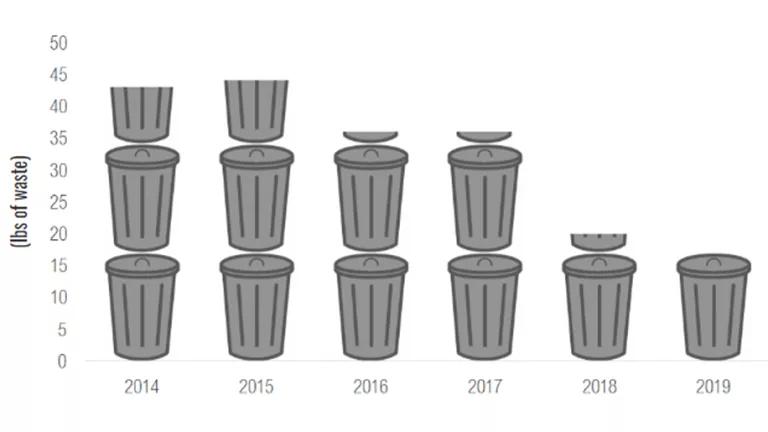Climate Change Is Wreaking Havoc on Our Oceans. Here’s How We Save Them.
It comes down to conserving marine areas and urgently reducing our emissions.

A school of jack mackerel swimming near Ship Rock, Catalina Island, California
Adam Obaza/WCR-PRD/NOAA
It comes down to conserving marine areas and urgently reducing our emissions.
The fate of our oceans and climate are inextricably linked. That’s now clearer than ever with the release of the latest report from the Intergovernmental Panel on Climate Change (IPCC), titled The Oceans and Cryosphere in a Changing Climate.
The word cryosphere comes from the Greek kryos, or “cold.” The term includes all of earth’s ice, including snow, glaciers, sea ice, permafrost, and ice sheets. This latest report compiles the best scientific information available on the current and future likely effects of global warming on both the ocean and the cryosphere.
Like the IPCC’s previous reports on climate change and land use, as well as the recent U.N. report on biodiversity, The Oceans and Cryosphere in a Changing Climate paints a grim picture of the future. I participated in the three-day IPCC meeting to finalize the report, an exercise that turned out to be alternatingly fascinating, tedious, and very depressing.
Though I have long been familiar with the science of climate change, it was the totality of the report—and the sheer number and magnitude of the impacts documented in it—that left me feeling profoundly shocked. Sitting through the line-by-line review of the report brought home the gravity of what we are facing in a way nothing had before.
Press coverage will likely focus on top-line newsworthy elements like the expected dramatic rise in sea levels and the loss of glaciers, permafrost, and sea ice. These are indeed alarming and unsettling. But for me, the real message was how many different aspects of climate change threaten our ocean and our planet—and how they interact in unexpected ways.
For example, melting ice in glaciers, the Arctic Ocean, and the ice sheets doesn’t just spell doom for unique, faraway ecosystems. The melt also means more fresh water will flow into the ocean. Fresh water, which is less dense than sea water, floats on top of the sea, creating a kind of lid. This freshwater layer forms a barrier between the sea water below and the atmosphere above. As a result, oxygen in the lower, denser sea water isn’t replenished. This, when combined with the fact that warmer water holds less oxygen—just like warm soda holds less fizz than cold soda—means the ocean is losing oxygen on which virtually all marine life depends.
The mantle of fresh water also limits the cycling of nutrients from the deep up to the surface, which in turn affects the growth of the tiny plants and animals at the base of the marine food chain. These changes, together with warming and acidification, are expected to have significant impacts on fisheries and the hundreds of millions of people who rely on seafood for protein. These same people and others may also be affected by reduced water supply as glaciers dwindle and face rising levels of pollutants in their water. Glaciers and ice sheets have served as a storage facility for airborne pollutants such as mercury, which are then released as the ice melts.
The grim news serves as an urgent call to action. Governments at all levels—from coastal states all the way up to the United Nations—must take concrete steps to enhance the resilience of our oceans in the face of the existential threats posed by climate change.
Fully protect 30 percent of the world’s oceans by 2030.
Creating fully protected ocean sanctuaries is our most powerful tool to help the ocean sustain itself—and us—in the face of climate change. Just like a healthy person is better able to face a difficult medical operation, a healthy ocean will be better able to withstand the impacts from climate change than one plagued by overfishing, pollution, habitat loss for marine species, and other man-made destruction. So government leaders should agree to fully protect at least 30 percent of the world’s oceans by 2030. This is an ambitious—but attainable—goal backed by scientists, environmental groups, and many countries around the world.
Reduce total greenhouse gas emissions—especially carbon dioxide.
Oceans play a central role in regulating our climate by absorbing excess heat and carbon dioxide. Indeed, the ocean has taken up more than 90 percent of the excess heat in the climate system and 20 to 30 percent of the carbon dioxide emitted since the 1980s. Carbon dioxide emissions pose a double whammy for the ocean: In addition to contributing to warming, CO2 also causes the ocean to become more acidic. The ocean is now more acidic than at any point in the last two million years.
Decision-makers need to move at full speed to reach net-zero emissions by 2050—using every possible tool, from energy efficiency improvements to eliminating food waste to clean car infrastructure to reforestation.
The IPCC special report on oceans paints a grim future for our seas and humanity. But we are not helpless in the face of this impending calamity: We can swiftly reduce emissions and fully protect large areas of the ocean. If we pursue both with equal vigor, we will give the ocean a fighting chance.



